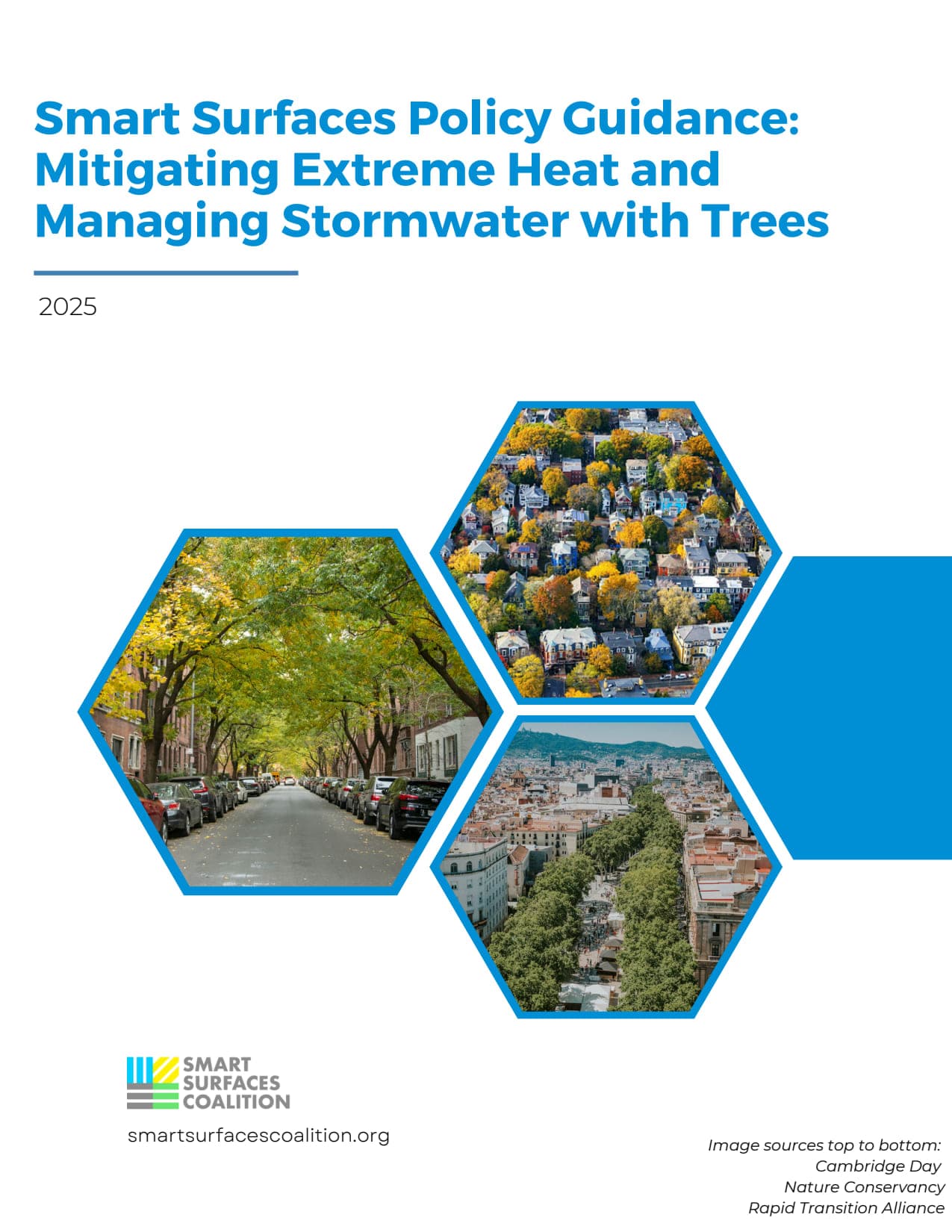Smart Surfaces Policy Guidance: Mitigating Extreme Heat and Managing Stormwater with Trees is a resource designed to help municipalities harness the power of urban tree canopies and related green infrastructure to combat extreme heat, reduce stormwater runoff, and improve public health. Trees are a cornerstone of the broader Smart Surfaces approach, which includes permeable pavements, green roofs, reflective materials, and solar PV, offering cities a cost-effective path toward greater resilience, livability, and equity.
The guide presents 15 policy recommendations that local governments can consider when crafting or updating their urban forestry policies. Rather than prescribing specific ordinance language, the publication provides a flexible framework of ideas and strategies that can be tailored to the legal and planning contexts of different jurisdictions:
- Draw on existing resources to develop the structure of a tree protection ordinance.
- Use the purpose and intent section of an ordinance to fully describe tree benefits.
- Prioritize tree planting in low-canopy areas to enhance equity and health.
- Create overlay zones or districts to strengthen tree protections in key areas.
- Offer incentives to encourage voluntary tree preservation.
- Design parking lot landscaping rules to include trees.
- Address financing needs for long-term tree maintenance.
- Establish “no net loss” canopy goals by geographic area.
- Tether off-site mitigation and in-lieu fees to areas with low canopy or high heat exposure.
- Define root protection zones for trees near development projects.
- Provide clear guidance to prevent tree damage from infrastructure work.
- Partner with public health agencies to support urban forestry initiatives.
- Design policies to restore and protect urban biodiversity.
- Include requirements for adequate tree planting soil volumes.
- Involve urban forestry professionals early in planning and development processes.
Together, these strategies help cities align environmental sustainability with public health, climate resilience, and community development.
Examples from Decatur, Athens-Clarke, and the Georgia Tree Council are included in the guide.
